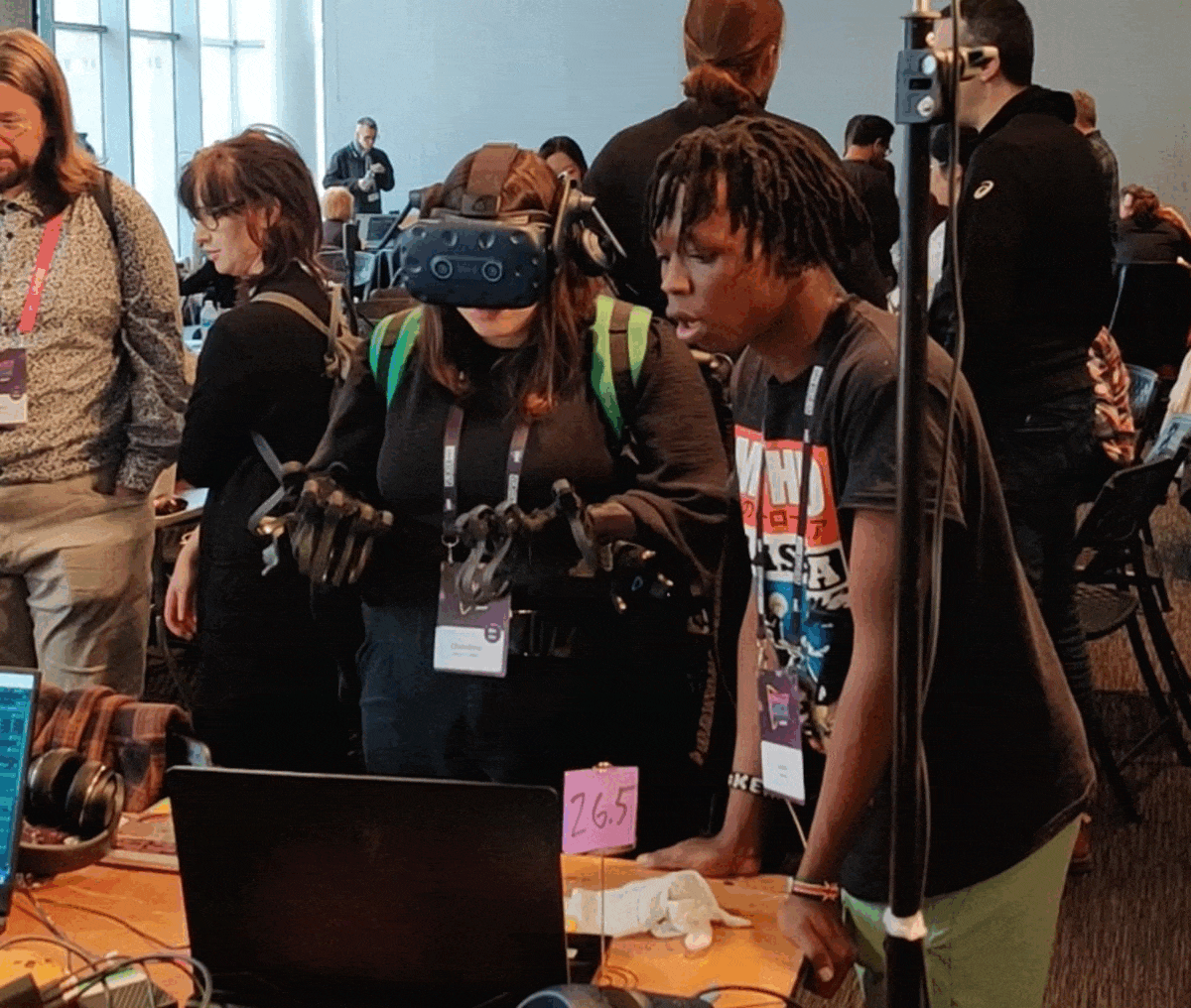CONCEPT / UNITY / XR
Foci Fungi

OVERVIEW
A multi-user experience redefining 'Human Presence' in a virtual fungicopia
Role
Research
Ideation
3D Design
XR Design
XR Development
Role
Research
Ideation
3D Design
XR Design
XR Development
Tools
Photoshop
SketchUp
Figma
Unity
Tools
Photoshop
SketchUp
Unity
Duration
36 hours
Duration
30 hours
Foci Fungi is a really fun MIT Reality Hack 2023 project!
The MIT Reality Hack is a 5-day XR hackathon hosted at MIT, bringing together talented innovators from across the globe. This event is a convergence of artists, creatives, engineers, storytellers, designers, and experts, all aiming to push the boundaries of what's possible in extended reality.
Foci Fungi is an innovative XR project developed during the MIT Reality Hack 2023. This multi-user experience redefines "Human Presence" in a virtual fungicopia, exploring the intersection of brain-computer interaction and virtual environments.

STRATEGY
SPONSORS + TRACKS + TECHNOLOGIES = NEW IDEAS
Sponsors play a crucial role in the MIT Reality Hack, providing access to the latest hardware, software, and technologies. This support allows participants to explore new ideas and develop groundbreaking projects. The event features several tracks focusing on both hardware and software, with sponsors offering insights into the latest trends and technologies, and guiding participants in their journey.

TEAM FORMATION
Big shout-out to my excellent team. Our team consisted of five members: two programmers/developers, two designers with development experience, and one copywriter/presentation developer. This diverse skill set fostered an atmosphere of creativity, cooperation, and innovation, enabling us to overcome obstacles, tackle complex challenges, and create a meaningful experience in a short time frame.

IDEATION


In our brainstorming sessions, we aimed to combine various technologies to create a unique experience. We explored the idea of using technology to transform positive brain states, such as joy and focus, into social connections. This led to the concept of visualizing another person’s positive “presence” through brainwave data.
One critical aspect of our initial ideation was exploring how brain waves could define presence and how virtual environments could alter our experiences of others' presence.
For the proof of concept, we began by establishing the core elements of our idea. Our project required the integration of Brain-Computer Interface (BCI) technology with a headset platform. We prioritized creating a multi-user experience within a carefully curated, immersive environment, aiming to explore the full potential of these technologies in a shared virtual space.







CHALLENGES
MULTI-USER INTERACTION THROUGH COLOCATION

We faced a significant challenge: The Meta Quest Pro headsets we used did not support colocation features, which are crucial for multiplayer experiences. This presented a significant challenge in enabling users to see and interact with each other within the virtual environment.

To overcome this limitation, we devised an innovative workaround by assigning avatars to the controllers of two different headsets and switching controllers between users. This approach allowed users to see each other through their controllers, effectively simulating a colocation feature between a headset and its own controllers.

BRAIN WAVE REPRESENTATION

Integrating brain wave data into our project was central to creating a unique user experience. We needed a way to represent users who moved beyond conventional humanoid avatars and reflected the creative essence of the project.

We chose to represent users as mushrooms, leveraging the fun and intriguing characteristics of fungi. The size and number of fungi associated with each user varied based on their brain wave data, specifically focusing on the "focus" brain state. This design choice allowed users to visualize and interact with each other's presence in the virtual space, providing a distinctive and engaging experience.

SPATIAL DESIGN

We crafted a dreamlike environment filled with fungi, leveraging mushrooms' unique physical properties to create a terrain vague, uncanny space that evokes a sense of exploration. This design choice reinforced the project's theme, as users, represented as fungi, became part of the environment itself.
"Fungicopia" is a playful and imaginative term we coined for our proposal. It combines "fungi," referring to mushrooms and similar organisms, with "cornucopia," a symbol of abundance and diversity. In the context of the project, "fungicopia" represents a rich and diverse virtual environment filled with various forms of fungi. This environment serves as a metaphorical and literal space where users can explore and interact, emphasizing abundance, diversity, and the unique aesthetic qualities of fungi.





FINAL OUTCOME
Transforming Brainwaves into a Virtual Fungicopia of Presence
Foci Fungi successfully demonstrated the potential of XR to transform traditional notions of presence and interaction. By integrating brain-computer interaction with a visually unique and conceptually rich virtual environment, the project offered a fresh perspective on how technology can enhance social connections and shared experiences. As we look to the future, the project opens up exciting possibilities for further exploration and development in XR and beyond.




RETROSPECTIVE
Brain Wave Data Utilization:
Achievement: Effectively used brain wave data to create dynamic, non-humanoid avatars, enhancing the experience of presence and interaction.
Improvement: Further refine the interpretation of brain wave data to include more nuanced emotional and cognitive states.
Multi-User Interaction:
Achievement: Innovatively addressed the challenge of colocation with Meta Quest Pro headsets, enabling multiplayer experiences in a hacky way.
Improvement: Explore more robust solutions for multi-user interaction, possibly integrating updated hardware features or new software solutions.
Virtual Environment Design:
Achievement: Created an immersive and unique fungicopia environment that complemented the project’s theme of redefined presence.
Improvement: Enhance the environmental visuals and interactive elements to deepen the sense of immersion and engagement.
User Experience and Accessibility:
Achievement: Successfully conveyed the concept of presence through a creative and accessible design.
Improvement: Conduct further user testing to refine the interface and interactions, ensuring inclusivity and ease of use for a broader audience.
Collaboration and Team Dynamics:
Achievement: The project benefitted from a diverse team each bringing unique skills, fostering a highly creative and innovative environment.
Improvement: Enhance communication and project management strategies to streamline the workflow and decision-making process.
